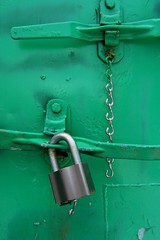
With today's technology, we are responsible for memorizing bank pins, Myspace passwords, id log-ins at work, and everything in between. I probably have twenty passwords memorize that I use on a regular basis. To make things worst some web apps are requiring you to change you password every 3-6 months. It can be very overwhelming, especially when you factor in case sensitivity.
How to make a good password:
- Some people suggest combining two words like dog and cat with alternating upper/lower case to make "DcOaGt"
- Another way is to use a funny phrase, like "I eat crayons".
- You can also use a descriptive phrase for each site: "Gotta get paid" (bank), "My box is full" (email), "What are you looking at?" (myspace)
When you are forced to change your password frequently:
- You can number you password sequentially, like DcOaGt01, DcOaGt02, DcOaGt03, DcOaGt04
Password management:
- Some people use encrypted thumb drives to store all of their passwords. I am fearful of doing this in case the thumb drive is lost or stolen.
- Others write down all of their passwords on a piece of paper and keep it under their keyboard. This is another method that I am leery of doing, if others have access to the computer.
- It's easy to let windows save your passwords on you home computer, but you might not remember you password, when checking you email at a friends house. Not to mention anyone at your house, or anyone with your computer, has a total access pass.
If you guys are wondering what method I use, you can keep on wondering. Do you really think I'd post my password strategies on a public site...fat chance. I use my own hybrid methods that not even my wife is privy to.






No comments:
Post a Comment